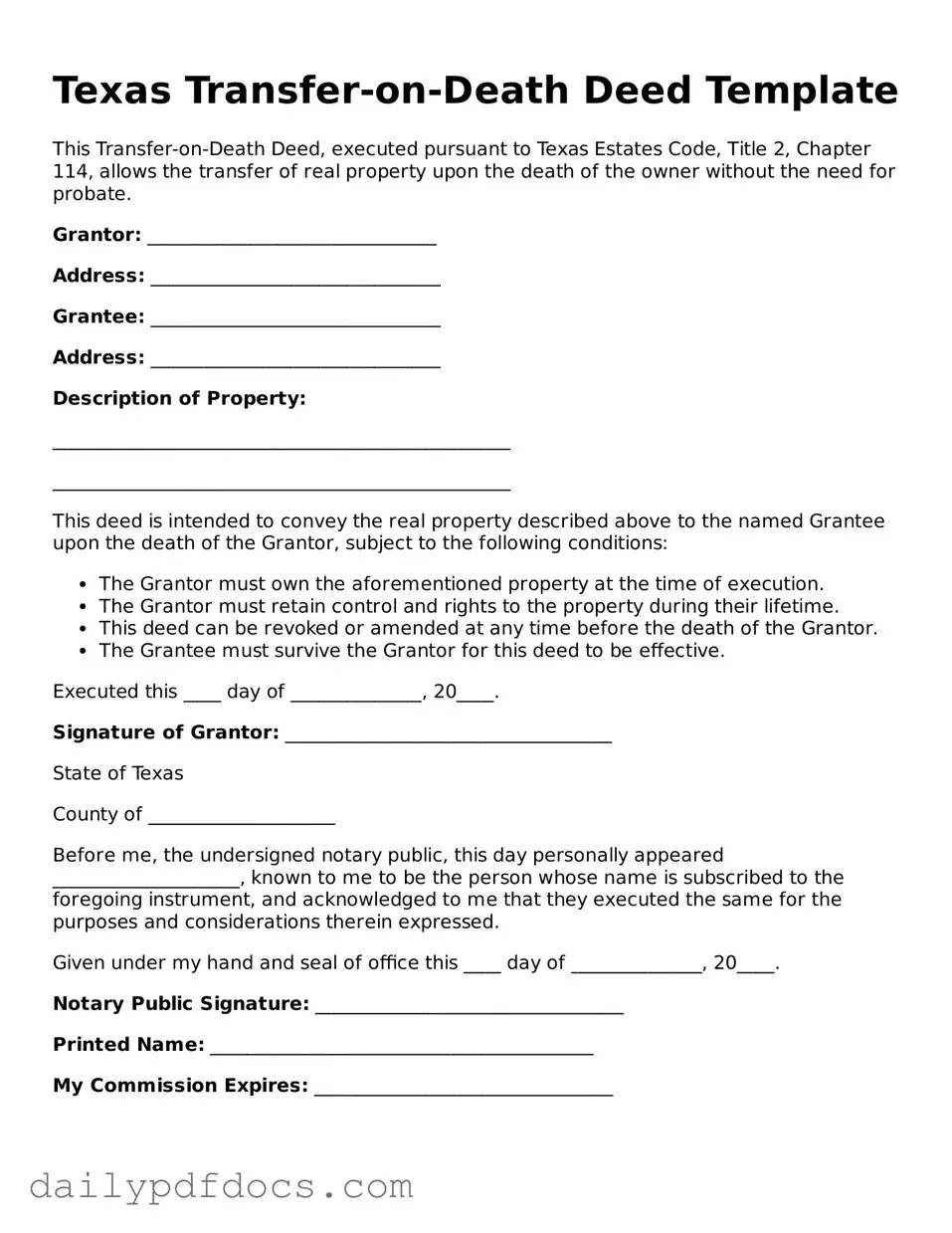Texas Transfer-on-Death Deed Template
This Transfer-on-Death Deed, executed pursuant to Texas Estates Code, Title 2, Chapter 114, allows the transfer of real property upon the death of the owner without the need for probate.
Grantor: _______________________________
Address: _______________________________
Grantee: _______________________________
Address: _______________________________
Description of Property:
_________________________________________________
_________________________________________________
This deed is intended to convey the real property described above to the named Grantee upon the death of the Grantor, subject to the following conditions:
- The Grantor must own the aforementioned property at the time of execution.
- The Grantor must retain control and rights to the property during their lifetime.
- This deed can be revoked or amended at any time before the death of the Grantor.
- The Grantee must survive the Grantor for this deed to be effective.
Executed this ____ day of ______________, 20____.
Signature of Grantor: ___________________________________
State of Texas
County of ____________________
Before me, the undersigned notary public, this day personally appeared ____________________, known to me to be the person whose name is subscribed to the foregoing instrument, and acknowledged to me that they executed the same for the purposes and considerations therein expressed.
Given under my hand and seal of office this ____ day of ______________, 20____.
Notary Public Signature: _________________________________
Printed Name: _________________________________________
My Commission Expires: ________________________________
